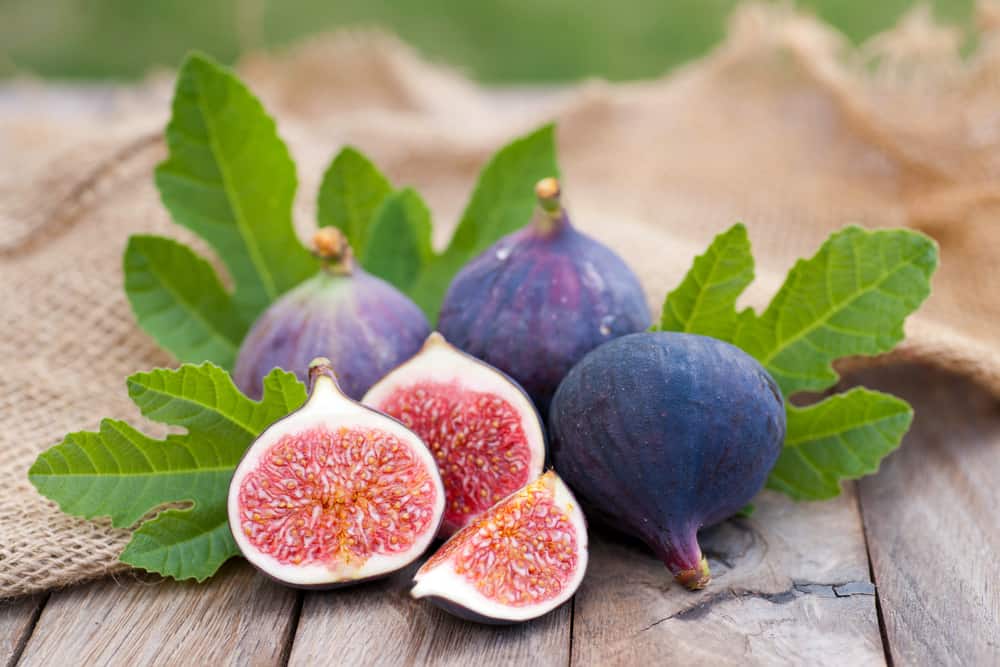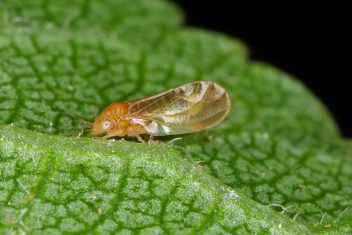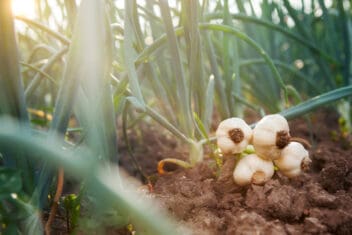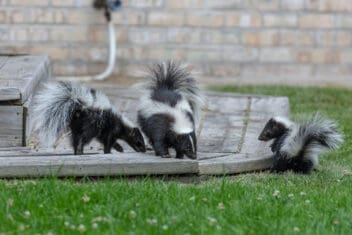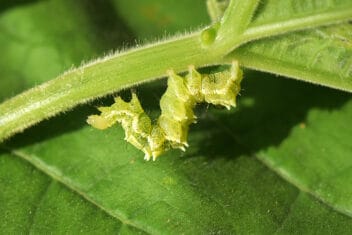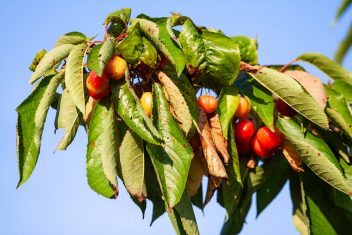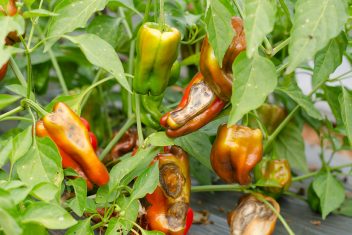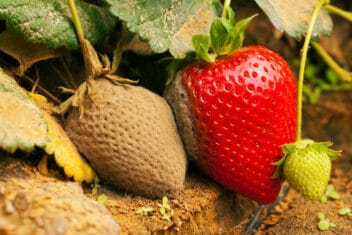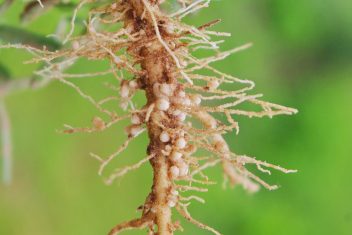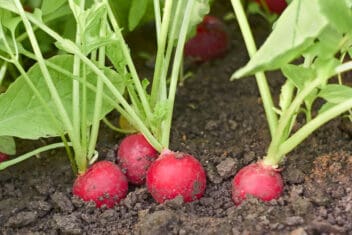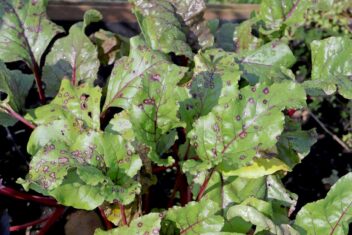Figs are an absolute pleasure to grow in the home garden or orchard. They’re beautiful and they reward you with such delicious treats. However, they require a little bit of work and effort to secure your harvest. Fig growing problems aren’t uncommon.
Whether you’re an experienced fig grower or you’re new to the trees, this list can help you find success and resolve any issues that you run into.

Problems That Can Ruin Your Fig Crop
The basics are worth covering quickly because many problems when growing figs can be avoided if you get the fundamentals right.
Figs need full sun. They grow in USDA Growing Zones 8-11, though there are a few hardy figs that can grow in Zones 6 and 7.
Plant in the spring or early fall and water regularly, but not too much, and make sure the soil is free draining.
Choose the right cultivar for your area and prune only if you need to maintain shape and remove dead or diseased branches.
1. Small Figs

Some varieties of figs are tiny, so make sure you know how big the figs on your tree should be before you panic.
There are a few things to look out for if your figs are smaller than they should be.
Although figs aren’t too fussy about soil type or pH, they must have soil that is free draining. If the water stands for too long, oxygen to the roots is decreased, resulting in small fruit.
Make sure you plant your fig tree in full sun. Originally from warm western Asian and Mediterranean environments, a fig tree in shade will produce small fruit. If other plants have grown big and shade your fig tree, consider cutting them back to allow sunlight in.
Just as too much water can cause small figs, so can not enough water. In especially hot and dry weather, consider mulching around the fig tree. Their roots are shallow and a fig tree will suffer from dry weather and insufficient watering.
Drip irrigation can help tremendously. Plants with shallow root systems love the steady water that they provide.
2. Black or Sour-Smelling Figs
Souring is a devastating problem to have when growing figs. You will likely lose all your figs off the tree.
It’s caused by the bacteria Candida spp., Hanseniaspora spp., Kloeckera spp., Pichia spp., Saccharomyces spp., and Torulopsis spp., or a few different yeasts.
Insects usually spread these pathogens, which is why it’s important to keep insects out of the garden.
When this disease is present, the figs begin to smell fermented and a pink discharge from the eye of the fruit occurs. The figs often turn black and may fall on the ground or hang on the tree. You may see a canker form where the fruit attaches to the tree.
The best way to fight this issue is to control the insects that spread it. This disease is often spread by vinegar fruit flies and nitidulid beetles.
Make sure you keep your fig trees in optimal health by watering and feeding properly and keeping bugs away. Remove all over-ripe fruit on the tree and around it on the ground. Do the same with any damaged fruit.
If you are about to plant new figs, try varieties that are resistant due to having narrow ostioles, the small hole at the end of a fig. These varieties include:
- ‘Celeste’
- ‘Alma’
- ‘Texas Everbearing’
3. Figs Aren’t Ripening
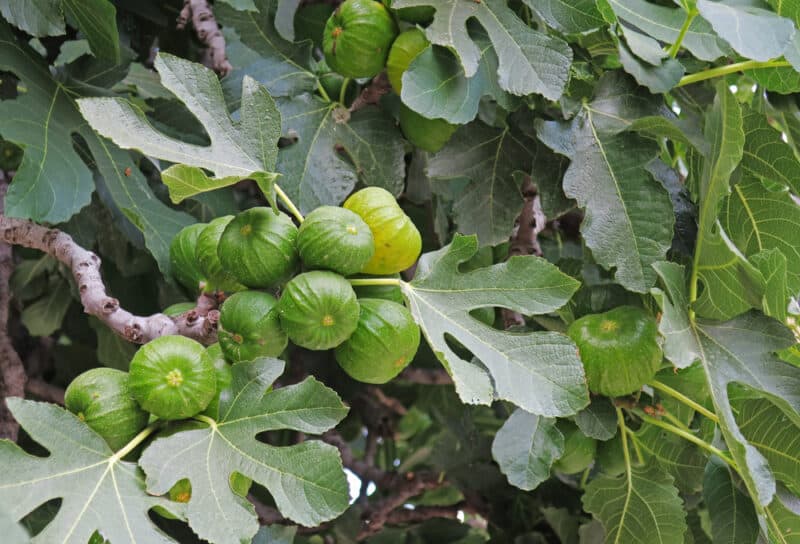
Figs are one of those fruits that must be ripe to perfection before eating or they’re bland and watery. Sometimes though, they refuse to ripen thoroughly.
When fig trees are stressed, they will slow down or halt ripening.
Lack of water is probably the most common stress-causing element. Figs in containers especially dry out quickly.
If your fig tree is starved of nutrients, it will slow down or stop ripening. Growing fruit and ripening is a lot of work for a tree and it needs plenty of help from nutrients.
Try fertilizing every year with a balanced fertilizer such as one with a 10-10-10 NPK. Feed trees in the early spring and mid to late fall. Follow the instructions for the specific fertilizer you chose.
If your fig tree is battling pests or diseases, it may slow or halt the ripening of the fruit to concentrate its resources on the battle. Keep your fig tree as healthy as possible with a good spray program if it’s needed, and plenty of nutrients and water.
4. Aborting Fruit
Leaving a fig tree too long with insufficient water in high temperatures will result in the tree aborting the fruit well before it is ripe. It will literally dump the fruit on the ground. Luckily, this is one of the easy problems to avoid when growing figs.
Figs also need to be pollinated to produce fruit. If enough pollinators don’t visit your tree, the fruits will drop when they’re really small. Encourage pollinators in your garden and if you’re growing in containers, be sure there are flowers nearby and that bees can access the area.
Be wary of the type of pesticides you use and when you use them. Some pesticides kill bees.
Sudden temperatures either hot or cold can cause the fig tree to drop its fruit. Although this is hard for you to control, you can help by placing the tree carefully when you plant it. Give it protection from the elements if it’s in an exposed position. Next to a wall, home, or row of evergreen trees can be a smart way to offer protection.
5. No Fruit At All
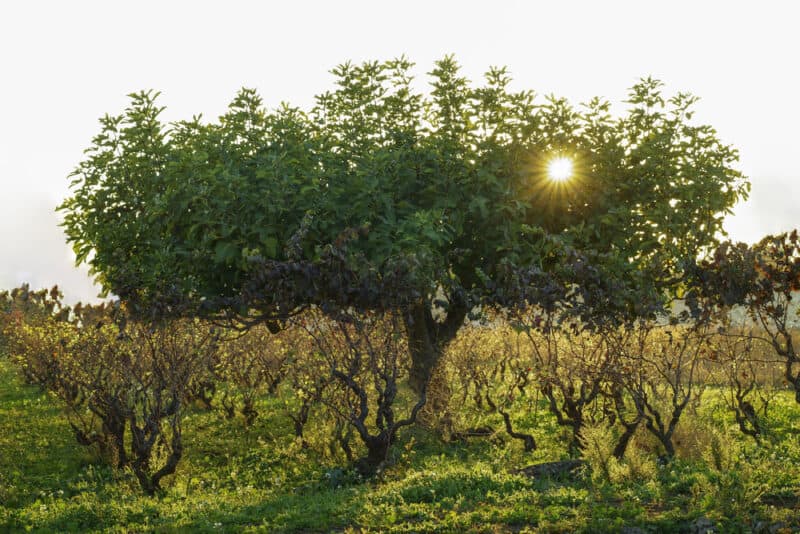
This can be one of the most annoying problems. Your tree may look healthy with plenty of foliage, but no fruit sets.
It could be as simple as the age of the tree. You have to give your fig tree time to mature before it will produce fruit. Check the particular cultivar that you’re growing to know when to expect fruits.
This can also be caused by too much nitrogen. Use a balanced fertilizer when you feed your tree. Something with equal parts nitrogen, phosphorus, and potassium is ideal.
Standing water can also cause figs to be too small, it can also cause the tree to not set any fruit at all. This is often a problem with fig trees in containers that don’t drain well or those planted in heavy soil. You can also water too often.
Always check the soil before adding water. If it feels moist, like a well wrung-out sponge, that’s ideal. Stick your finger in the soil. If it feels dry up to your second knuckle, it’s time to water. If it feels wetter, don’t add any moisture at all.
6. Water Soaked Spots on Leaves
Fig leaf blight is caused by the fungus Pellicularia kolerga. At first when this disease attacks you’ll see little yellow, water-soaked spots on the foliage of the tree. Then the leaves become brown on the underside and silvery white on top.
Unfotunately, fungicides don’t work against this foe. That’s why preventing fig growing problems like this is key.
You should prune away infected branches and use good garden hygiene to prevent it from spreading. Always clean your tools, keep weeds under control, and water at the base of trees at the soil level, not on foliage.
7. Pink Fuzz on Branches
Fig trees are quite sensitive to their condition. Often they will drop fruit if they have a disease set in.
One common disease that can cause fruit drop is pink disease. It thrives in areas with high humidity and lots of rain. You’ll see a pink, fuzzy coating on the branches. This is often in areas of the tree where there is very little air circulation. The branches will look sickly, or just die.
Caused by the fungus Erythricium salmonicolor, once again, there isn’t a good fungicide for controlling this problem.
Prune your fig tree for air circulation and make sure you sterilize your tools to prevent spreading the disease between trees.
8. Angular Yellow Blotches on Leaves
If you see yellow blotches on the green leaves of the fig tree, you may have fig mosaic virus. The yellow blotches usually spread to the fruit. Next, a rust-colored ring appears on the leaves and eventually, leaves and fruit begin to die off.
Often this is spread by spider mites and other insects, which is another reason to keep bugs away.
Fig mosaic virus is often introduced into the home garden and orchard by trees already infected. When you buy the tree and before you plant it, examine it well for the telltale signs of the yellow blotches on the foliage. Don’t plant it if you see any signs of this disease.
9. Rust-Colored Spores on Leaves and Fruits
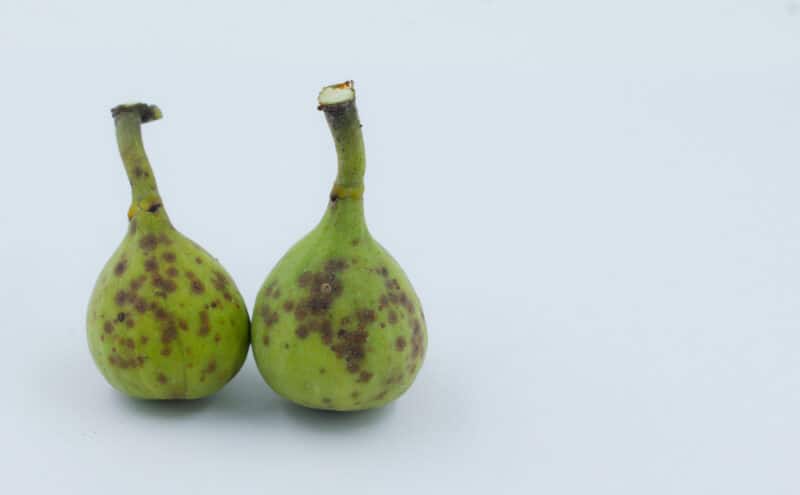
Fig rust (Physopella fici) is similar to other fungal rusts. At first, yellow spots form. These then take on a brownish tinge. Over a short period of time, this develops into to a rust-colored spore and the leaf falls from the tree.
The disease is often worse in rainy conditions with high humidity.
This disease will generally not kill the fig tree, but it will result in vigor issues over time.
Garden and orchard hygiene is paramount. Remove the fallen leaves immediately and burn them or throw them in the garbage. Don’t water the foliage, but water the ground level, instead. Use a fungicide targeted at rust and start application just prior to fruit formation, as this is when the disease most commonly starts to attack.
